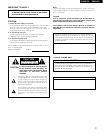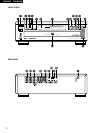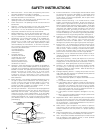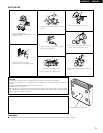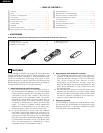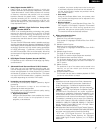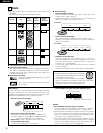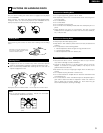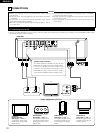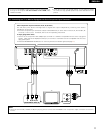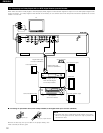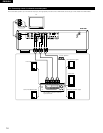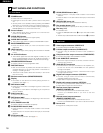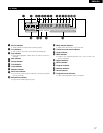
ENGLISH
10
CONNECTIONS
4
• Read the manuals of all the components when making
connections.
• Keep the power cord unplugged until all connections have been
completed.
• If the power is on when connections are made, noise may be
generated and damage the speakers.
• Be sure to connect the left and right channels properly, L (left) to
L, R (right) to R.
NOTES:
• Plug the power cord securely into the power outlet. Incomplete
connection may result in noise.
• Binding the power cord together with connection cords may result
in humming or noise.
• Plug in the power cord in the direction in which the sound is most
to your liking.
AUDIO IN
L
R
VIDEO IN S-VIDEO IN
(1) Connecting to an AV TV
• Use the included video/audio cord to connect the TV’s video input connectors and audio input connector to the DVM-4800’s video output
connectors and audio output connector.
DVM-4800
S-Video output connector
The video signals are divided into color (C) and
brightness (Y) signals, achieving a clearer picture.
If the TV is equipped with an S-Video input
connector, we recommend connecting it to the
DVM-4800’s S-Video output connector using a
commercially available S-Video connection cord.
To power outlet
TV
Standard
(Direct View TV)
(See pages 10 and 11.)
Conventional TV set (4:3),
Wide-screen TV set (16:9),
Digital TV etc.
CRT projector
(See pages 10 and 11.)
Cinema-size images can be
enjoyed by projecting from
three light sources onto a
large screen.
LCD projector
(See pages 10 and 11.)
Cinema-size images can be
enjoyed by projecting from
an LCD panel onto a large
screen.
Projection TV
(See pages 10 and 11.)
Powerful images can be
enjoyed with a large rear
screen projector.
Video equipment you own



